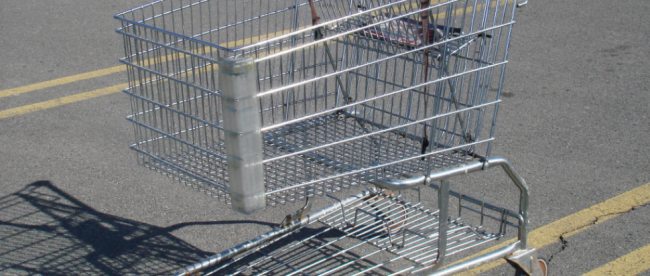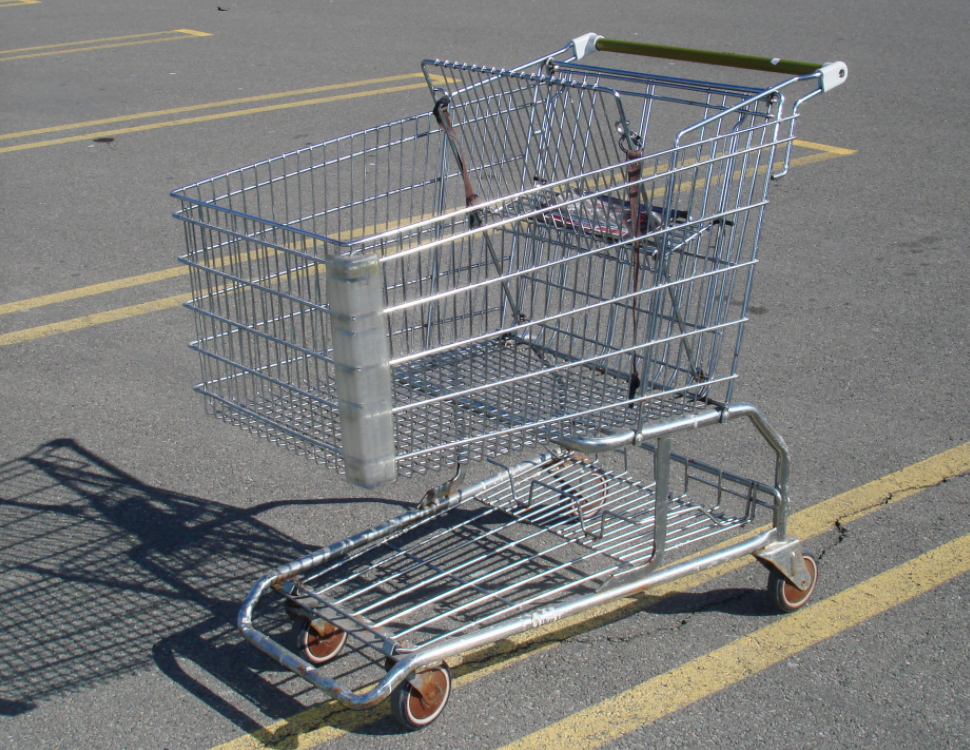Selling a Better Way to Shop


Pictured above is a shopping cart — a generic one you’d see like the one at your local grocery store. They’re so common we probably take them for granted, making exceptionally long shopping lists which — assuming we can find everything we’re looking for — would run way too heavy and bulky for our arms to carry through the store. To go shopping without one, except perhaps for a quick run for a single item or two, seems foolish.
But that wasn’t always the case. In fact, the opposite was initially true — and early would-be cart users took some convincing.
The first grocery store carts were invented in 1937 by an Oklahoman grocer named Sylvan Goldman. Goldman already had a history of entrepreneurship in the retail shopping sphere, as Priceonomics explains:
At the time, most grocery stores in the United States were a hand-holding experience. Every item was behind a counter, and you’d be “waited on” by a clerk in a white apron. If you were buying, say, a pound of sorghum wheat, you’d point to it, then the employee would reach up, measure it out for you, and give it to you in a pretty package. From a shop owner’s perspective, this business model was not ideal: it required a large, knowledgeable staff, and it moved goods at a rather slow pace.
Goldman had long-since recognized these shortcomings — and in California [in 1919] he saw an answer: the “self-serve” supermarket. [ . . .] By April [of 1920], Goldman opened Sun Grocery Company, the state’s first “supermarket,” a massive complex that featured “all different types of food” and a self-service policy. The franchise was wildly popular and experienced miraculous growth: within three years, Goldman was operating 55 stores throughout Tulsa.
So it shouldn’t be a surprise that he wanted to make the experience even more efficient. More than 15 years after starting his grocery chain, Goldman took a pair of shopping baskets — allowing shoppers to carry, and therefore buy, twice as much — and connected them to the top and bottom of a wooden chair. He then attached wheels to legs of the chair. And, with that, the shopping cart was born.
But something went wrong. Goldman expected his creatively-rigged cart to be instantly popular — who wouldn’t want to carry twice as much with only a fraction of the work? But as the New York Times noted, at first, “only the elderly were interested” were interested in Goldman’s new invention. Younger customers saw the pushcarts as an affront to their ability to function normally; as Wikipedia notes, “men found them effeminate; women found them suggestive of a baby carriage.”
The carts proved unpopular. But Goldman didn’t give up — he instead got creative. As Mental Floss explains, Goldman decided to hire models — not to demonstrate the use of the carts (that was pretty straightforward), but as fake shoppers, making the new amenity seem like the cool thing to use, and among attractive shoppers at that. He positioned a similarly attractive greeter at the store’s entrance, charged with pointing out how popular the carts were. In short order, the stigma around the carts waned.
The convenience of the shopping cart made it even more popular, and demand for them spread beyond Goldman’s stores. Goldman earned millions of dollars in royalties as a result.
Bonus fact: Shopping carts can cost as much as $400 a piece and, per Wikipedia, cart theft runs retailers about $800 million a year in losses. As a result, many retailers take steps to reduce shopping cart theft, but one idea — a cheap one at that — is no longer permitted: outfitting a cart with a tall vertical bar. The bar is designed to get caught on the exit doors of the store, preventing the shopper from taking the cart to the parking lot and ultimately, from stealing it. However, according to a 1999 Associated Press article (archived here), “erecting bars at a store entrance to prevent carts from going into the parking lot also kept out physically disabled customers, a violation of the Americans with Disabilities Act.”
From the Archives: The Great Bread Squeezing Crime Spree of the Late 1990s: If that title doesn’t earn a click, none will.
